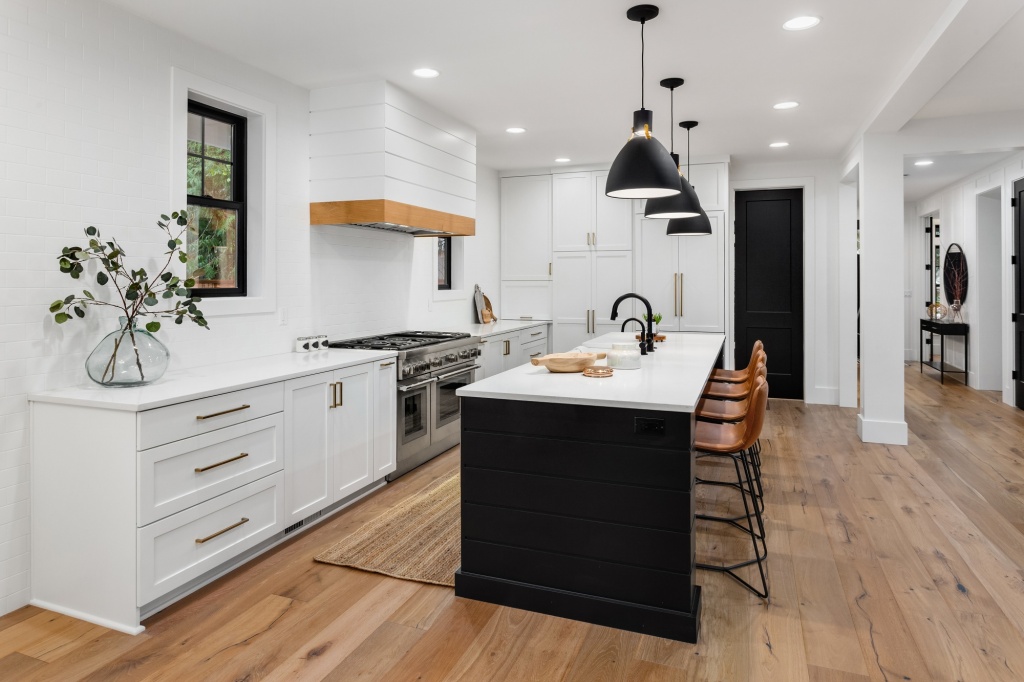From modern rustic or Mediterranean to distinguished classic or farmhouse-inspired, the labels assigned to interior design styles seem to be growing.
Gone are the simple labels of traditional, modern and transitional.

One design company that partners with several local builders even lists 12 design styles, ranging from modern edge and industrial chic to new traditional.
But is design really all that complicated or prescribed? Fortunately not. The good news is that all of the new labels indicate more flexibility and overlap between styles than ever before.
For example, the terms Bohemian and transitional and even earth-inspired might draw from two or more categories all at once.
So what’s your interior design style? During the homebuilding process, builders and their design centers help each buyer discover their needs and preferences.
Professional designers included
An excellent perk of purchasing a brand new home is that professional interior design consultations are included in the process. The professionals who work for the builder or their design center are experienced in helping people navigate the process and may think of ideas you haven’t yet considered.
Most builders offer both virtual design centers and physical design centers. By starting with virtual design, buyers have the opportunity to see how the entire interior of their new home will look with each set of choices.
Coached by the professional designers, buyers can swap out one item for another to see various views. Samples of flooring, tiles, counters, cabinets and more will be made available before buyers make decisions and place orders.
Speaking of decisions, builders and design centers point out a couple of important factors in design decision-making. These include choosing elements that you’ll love for years and that will create flow from space to space within the home.
Ask about the process
Builders’ welcome center representatives are eager to explain the design process for their new-home communities. And you don’t even have to be committed to purchasing one of their homes to ask questions about how they approach interior design.
For some buyers, the interior design element may even be the deciding factor. Ask away. Builders want to show you what they offer and how they will work with each new buyer from the outset.
Collect design inspirations
To prepare for design center meetings, start by looking around your existing home. Note your favorite aspects, including furniture colors or styles and artwork that you plan to display in the new home.
Note any items or styles that you don’t want to replicate in the new home. Take pictures of all of these and sort the images into folders on your devices.
Next, look at model homes, online home design sites, friends’ homes, design websites and TV shows, magazines and more. There’s no need to limit your model-home interior design tours to the neighborhood where you’re purchasing.
Find inspiration from various new-home communities or from the displays at home improvement stores.
Take pictures of what you like. Save all images from the web of features that you love.
Include everything from color schemes and tile to countertops, cabinetry and even the styles of light fixtures. You’d be amazed at what your preference in ceiling fixtures, faucets or cabinet handles says about your design style.
Take a style survey
Design centers offer quizzes or surveys that help the professional design teams understand new-home buyers’ style preferences. If two of you plan to co-own the new home, each of you should take the survey.
Don’t worry if one of you turns out to prefer ultra-modern design while the other prefers traditional design. Designers welcome the opportunity to flex their creative muscle and help households find cohesive design across style types.
Design surveys may even include questions about your preferences around the use of sustainable materials. Ask about the builder’s offerings for sustainable design elements.
Learn about color palettes
Once you and the professional designer have a general idea of the type of styles you’ll be most comfortable with in your new home, the designer may want to gather more information on your color preferences.
Keep in mind that the base color palette(s) of your choosing do not include accents; those come later. Rather, you’ll be asked to compare and contrast warm palettes of beiges with bright palettes of white or cooler palettes of grays.
The color palette you prefer will guide you in choosing major features such as flooring, countertops and cabinets.
Get ready to let your builder’s designers help you unwrap the new home of your dreams this year.










